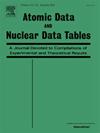用于神经网络训练/测试和持续学习的具有多级相似性的正常和病变肺模拟呼出气溶胶图像数据集
IF 2.7
3区 物理与天体物理
Q2 PHYSICS, ATOMIC, MOLECULAR & CHEMICAL
引用次数: 2
摘要
虽然呼出的气溶胶和它们的模式在表面上看起来很混乱,但它们本质上包含着与潜在的呼吸生理学和解剖学相关的信息。这项研究提出了一个多级数据库模拟呼出的气溶胶图像从正常和患病的肺部。解剖学上精确的口肺几何形状延伸至G9,以模拟小气道中两个阶段的阻塞,并利用基于生理学的模拟来捕获不同呼吸测试的流体颗粒动力学和呼出的气溶胶图像。该数据集旨在测试卷积神经网络(CNN)模型在用于迁移学习时的两个性能指标:插值和外推。为此,开发了三个图像相似性降低的测试数据集(即,级别1,收件箱和发件箱)。我们测试了四种网络模型(AlexNet、ResNet-50、MobileNet和EfficientNet),对于发件箱测试图像,所有模型的性能都有所下降,这些图像位于设计空间之外。通过向训练数据集中添加新图像来评估每个模型的持续学习效果,并在多个层面对新训练的网络进行测试。在四种网络模型中,ResNet-50在多层次测试和持续学习方面都表现优异,其中持续学习将最具挑战性的分类任务(即带发箱测试图像的3类)的准确率从60.65%提高到98.92%。这些数据集可以作为基准训练/测试数据库,用于验证现有的CNN模型或量化新的CNN模型的性能指标。本文章由计算机程序翻译,如有差异,请以英文原文为准。
Datasets of Simulated Exhaled Aerosol Images from Normal and Diseased Lungs with Multi-Level Similarities for Neural Network Training/Testing and Continuous Learning
Although exhaled aerosols and their patterns may seem chaotic in appearance, they inherently contain information related to the underlying respiratory physiology and anatomy. This study presented a multi-level database of simulated exhaled aerosol images from both normal and diseased lungs. An anatomically accurate mouth-lung geometry extending to G9 was modified to model two stages of obstructions in small airways and physiology-based simulations were utilized to capture the fluid-particle dynamics and exhaled aerosol images from varying breath tests. The dataset was designed to test two performance metrics of convolutional neural network (CNN) models when used for transfer learning: interpolation and extrapolation. To this aim, three testing datasets with decreasing image similarities were developed (i.e., level 1, inbox, and outbox). Four network models (AlexNet, ResNet-50, MobileNet, and EfficientNet) were tested and the performances of all models decreased for the outbox test images, which were outside the design space. The effect of continuous learning was also assessed for each model by adding new images into the training dataset and the newly trained network was tested at multiple levels. Among the four network models, ResNet-50 excelled in performance in both multi-level testing and continuous learning, the latter of which enhanced the accuracy of the most challenging classification task (i.e., 3-class with outbox test images) from 60.65% to 98.92%. The datasets can serve as a benchmark training/testing database for validating existent CNN models or quantifying the performance metrics of new CNN models.
求助全文
通过发布文献求助,成功后即可免费获取论文全文。
去求助
来源期刊

Atomic Data and Nuclear Data Tables
物理-物理:核物理
CiteScore
4.50
自引率
11.10%
发文量
27
审稿时长
47 days
期刊介绍:
Atomic Data and Nuclear Data Tables presents compilations of experimental and theoretical information in atomic physics, nuclear physics, and closely related fields. The journal is devoted to the publication of tables and graphs of general usefulness to researchers in both basic and applied areas. Extensive ... click here for full Aims & Scope
Atomic Data and Nuclear Data Tables presents compilations of experimental and theoretical information in atomic physics, nuclear physics, and closely related fields. The journal is devoted to the publication of tables and graphs of general usefulness to researchers in both basic and applied areas. Extensive and comprehensive compilations of experimental and theoretical results are featured.
 求助内容:
求助内容: 应助结果提醒方式:
应助结果提醒方式:


